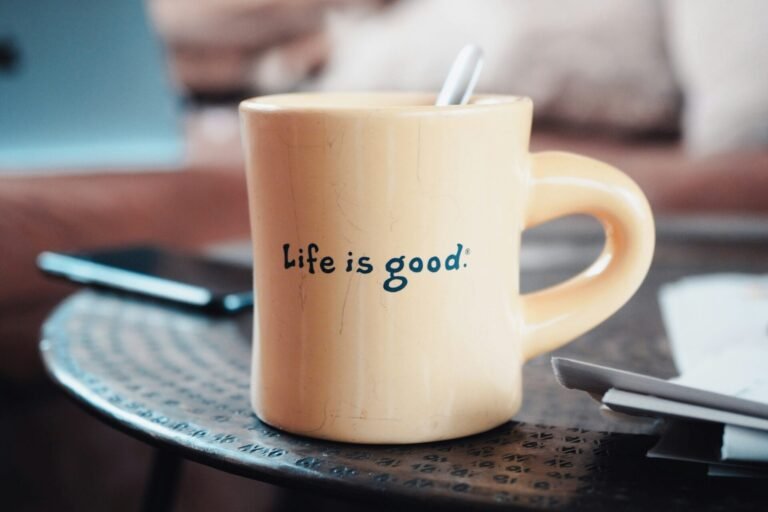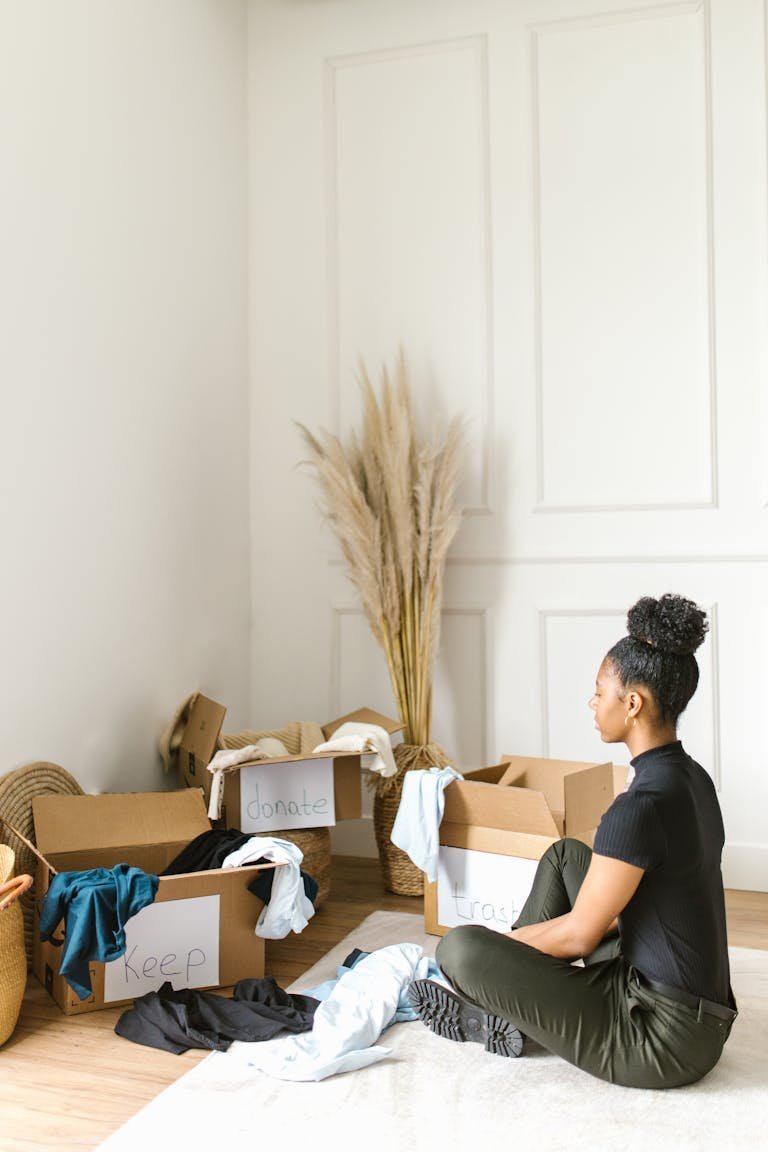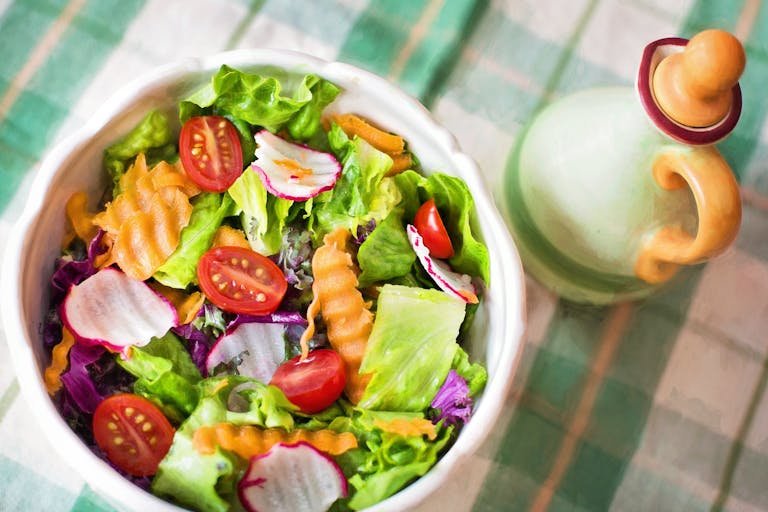Declutter Your Photos
Why Should You Declutter Photos?
At some point in your intentional living journey the question of what to do with photos will arise. The accumulation of photos can easily become overwhelming. If you decide to declutter your photos, it can offer numerous benefits that can significantly improve your quality of life. A streamlined and organised photo collection not only contributes to a simplified, stress-free environment but also aligns with the principles of minimalism.
Benefits of decluttering your photos
- Reduces Overwhelm and Alleviate Stress: Reducing the volume of photos can alleviate stress. An overwhelming number of images can lead to decision fatigue when searching for a specific photo, causing unnecessary anxiety. By decluttering, you create a more manageable and accessible collection, making it easier to find and enjoy your favourite memories without the hassle.
- Save Time: Moreover, an organised photo library enhances efficiency. Whether you are working on a personal project or preparing a professional presentation, a well-curated collection allows you to quickly locate and utilise the images you need. This efficiency can save valuable time and reduce frustration.
- Preserve Cherished Memories: Taking steps to declutter your photos actually aids in preserving your most cherished memories. Physical photos are prone to deterioration over time, and keeping only the most meaningful ones ensures they are stored and maintained properly. Similarly, for digital photos, decluttering reduces the risk of data loss and simplifies the backup process, ensuring your important images are securely stored.
- Quality Over Quantity: an organised photo collection aligns with the minimalist philosophy, which emphasises quality over quantity. By focusing on the photos that truly matter, you create a more meaningful and intentional collection. This approach not only simplifies your life but also allows you to appreciate and value your memories more deeply.
Benefits of Decluttering Photos
Decluttering your photos—whether physical or digital—offers numerous benefits, including reduced stress, increased efficiency, better preservation of memories, and alignment with minimalistic principles. In this comprehensive guide we’ll take you through finding time to organise your photos so that you can benefit from a more streamlined collection that allows you to enjoy and cherish your memories without the burden of clutter.
How to Prepare to Declutter your Photos?
Deciding when to declutter your photos can be a daunting task, but with proper preparation, it becomes a manageable and even enjoyable project. When you set out to declutter physical and digital photos, remember that these sit squarely in the sentimental category of clutter. If you are early in your minimalism or intentional life journey, you may want to approach something simpler first so that your decluttering muscle is well developed.
Not ready to tackle the sentimental stuff just yet? Why not read our Beginner’s Guide hto Decluttering.
Gather all of your photos.
Before starting, gather all your photos in one place. This includes both physical prints and digital files. For physical photos, collect them from albums, boxes, drawers, and any other storage spaces. For digital photos, compile them from various devices such as smartphones, cameras, computers, and cloud storage.
Set aside time
Next, set aside a dedicated block of time for the task. Decluttering photos isn’t something that can be done in a hurry; it requires patience and attention to detail. Allocate several uninterrupted hours and, if necessary, spread the project over multiple sessions. Consistency is key to ensuring that the job gets done thoroughly.
Find an appropriate place to declutter
Creating a comfortable workspace is crucial. Choose a well-lit area with ample space to spread out your photos. A large table or the floor can work well. Ensure that you have all necessary supplies on hand. For physical photos, this includes storage boxes, photo albums, envelopes, and labels. For digital photos, ensure you have a computer with sufficient storage capacity and access to all necessary devices and accounts. Consider using an external hard drive or cloud storage for backups.
Make a plan
Having a clear plan and the right tools will make the process smoother. Consider organising your photos by categories such as events, dates, or people. This will make it easier to decide what to keep and what to discard. Also, keep a trash bin or shredder nearby for disposing of unwanted photos.
Preparation Is Key To Success
By preparing adequately, you set yourself up for a successful photo decluttering project. The effort invested in preparation will pay off as you navigate through the steps to declutter your photos with greater ease and efficiency, ultimately leading to a more organised and enjoyable photo collection.
What Criteria Should You Use to Decide Which Photos to Keep?
Deciding which photos to keep and which to discard can be a daunting task, particularly when dealing with a vast collection of both physical and digital images. To streamline this process, you can apply several criteria to make informed decisions to declutter physical and digital photos.
When making these decisions, it’s important to balance emotional attachment with logical reasoning.
Declutter your photos – Questions to ask yourself:
- Does this photo evoke a strong, positive emotion or serves a specific purpose, such as documenting a significant life event?
- If the answer is no – It may be time to let it go. This approach helps ensure that the photos you keep are those that truly matter to you.
- Consider the context and uniqueness of each photo.
- Is it part of a series that tells a story?
- Does it capture a unique moment in time that cannot be replicated?
By focusing on quality over quantity, you will find it easier to curate a collection of photos that genuinely resonate with your experiences and memories.

How to Organise Your Keepers?
Once you have sorted through all your photos and decided which ones to keep, organising them effectively is paramount. Start by categorising your photos into primary groups such as family, travel, events, and friends. These categories will help you quickly locate specific photos when needed. For instance, family photos might include holiday gatherings, birthdays, and everyday moments, while travel photos could be organised by destination.
Physical Photos
For physical photos, consider using albums or storage boxes that allow you to label each section clearly. Albums with pockets for individual photos are particularly useful, as they offer protection and easy access. Make sure to label each album or box with the category and date range it contains.
Digital Photos
Digital photos offer more flexibility and convenience when it comes to organisation. Utilise folders on your computer, external hard drive or cloud storage drives to create a similar categorisation system. Name each folder according to the category and include subfolders for specific events or trips. For example, within your “Travel” folder, you might have subfolders named “Paris 2019” or “Japan 2020.” Alternatively, you may choose to label the folders with a year, month and date if you have that information as this will allow you to order those folders in date order e.g. 20191025 – Paris.
Photo management software can significantly streamline the organisation process. Programs like Adobe Lightroom, Google Photos, or Apple Photos offer advanced sorting features, including facial recognition, geotagging, and date filters. These tools can automate much of the categorisation process, saving you time and effort. Additionally, they often provide editing features, allowing you to enhance and correct your photos as you organise them.
Cloud storage solutions such as Google Drive, Dropbox, and iCloud provide a secure and accessible way to store your digital photos. These platforms also offer the advantage of sharing capabilities, enabling you to easily share albums with friends and family. Labelling each album or folder within these services ensures you can retrieve specific photos effortlessly.
Organising & Filing Photos
By implementing these methods, you can create an organised and easily navigable photo collection, preserving your cherished memories in both physical and digital formats. Whether through traditional albums or modern software, effective organisation ensures that your photos are not only well-preserved but also readily accessible for future enjoyment.
What Are the Best Ways to Repurpose Old Photos?
Having been through the process to declutter physical and digital photos, moving on to repurpose these old photos can breathe new life into cherished memories while simultaneously decluttering your space.
Create Photo books
One of the most popular methods is creating photo books. These albums are not only aesthetically pleasing but also serve as a tangible collection of moments that can be easily shared with family and friends. Online platforms offer customisable templates, making it simple to arrange your photos into a beautiful, cohesive story. We’ll share our more comprehensive recommendations for good services in a future post. If you’re keen to get started with these then you might want to check out Popsa or Photobox.
Photo Scrapbooks
Another creative option is to design scrapbooks. Scrapbooking allows for a personalised touch, incorporating embellishments, handwritten notes, and other memorabilia that complement your photos. This method offers a hands-on, nostalgic experience, perfect for those who enjoy crafting.
Assemble Collages
For a more artistic approach, consider assembling collages. Collages can be framed and displayed as unique art pieces around your home. They provide an opportunity to showcase a theme or a specific period, turning your photos into a decorative element that sparks joy and conversation.
Photo Gifts
Old photos can also be transformed into thoughtful gifts. Whether it’s a custom calendar, a set of postcards, or a photo puzzle, personalised photo gifts are meaningful and treasured by recipients. These gifts are particularly well-suited for significant life events such as anniversaries, birthdays, or holidays. Remember gift giving is always about the receiver and so although some of us choose to practice minimalism, others in our wider family and friendship circles do not. These gifts can spark joy for others.
Slideshows
Digitising physical photos is an excellent way to save space while preserving memories. Scanning your photos and organising them into digital slideshows allows you to easily share and enjoy them without the clutter of physical copies. Digital slideshows can be played during family gatherings, celebrations, or even shared online with distant relatives. Another good reason to declutter and sort the wheat from chaff, so that these slideshows are enjoyable for others.
Repurposing Old Photos
Ultimately, the best way to repurpose old photos depends on your personal preferences and the stories you wish to tell. Whether through photo books, scrapbooks, art pieces, gifts, or digital formats, repurposing your photos can help you retain the emotional value of these memories while keeping your space organised and clutter free.
How to Dispose of Photos Responsibly?
When you declutter your photo’s, disposing of unwanted physical prints or digital files requires careful consideration. You’ll wan to make sure that you are being both environmentally responsible and giving suitable consideration to personal privacy protection.
Recycle
For physical photos, recycling is an effective and eco-friendly option to declutter your photos. Many local recycling programs accept photo prints, but it is essential to verify with your local recycling centre as some photos, especially older ones, may contain chemicals that are not suitable for standard recycling processes. If recycling is not an option, consider reusing the photo paper for craft projects or donating them to art schools where they could be repurposed.
Secure Deletion of your decluttered digital photos
When it comes to digital photos, secure deletion is paramount when you declutter your photos. Simply deleting them from your device does not permanently remove them; they can often be recovered with data recovery tools. To ensure complete removal, use specialised software designed for secure deletion, which overwrites the files multiple times to prevent any possibility of recovery. Additionally, if you are disposing of an old device, ensure that it is wiped clean using a factory reset or professional data destruction services.
Shredding your decluttered physical photos
Protecting your privacy when disposing of photos is crucial, particularly if the images contain sensitive information. For physical photos, consider shredding them before disposal. A cross-cut shredder is more effective than a strip-cut shredder, as it provides a higher level of security by cutting the photos into smaller pieces.
Encryption Prior To Deletion
For digital photos, encrypting the files before deletion adds an extra layer of security. Many secure deletion tools include encryption features, ensuring that even if files are somehow recovered, they cannot be accessed without the encryption key.
By following these guidelines, you can declutter your photos and dispose of them responsibly, protecting both the environment and your personal privacy. Whether recycling, securely deleting, or repurposing, taking thoughtful steps ensures that your photo decluttering process is both effective and safe.

What Are the Pros and Cons of Decluttering Photos?
Decluttering photos, whether physical or digital, offers a variety of benefits and challenges. To provide a balanced perspective, let’s explore both the pros and cons associated with this task.
Pros
- Reduced Clutter: One of the most immediate benefits is the significant reduction in physical and digital clutter. Clearing out unnecessary photos frees up space in your home and digital storage.
- Easier Access to Cherished Memories: By organising and decluttering, you make it easier to locate your most treasured images. This improved accessibility allows you to enjoy your memories more frequently and share them with loved ones.
- Sense of Accomplishment: Completing the task of decluttering photos can provide a substantial sense of achievement. The effort put into sorting, organising, and discarding unnecessary images results in a rewarding feeling of order and control.
- Improved Mental Clarity: A clutter-free environment, both physically and digitally, can contribute to improved mental clarity and focus. The process of decluttering can act as a therapeutic activity, reducing stress and promoting a sense of calm.
- Enhanced Creativity: As you sift through old photos, you may find inspiration for creative projects such as photo albums, scrapbooks, or digital slideshows. This can reignite your passion for photography and storytelling.
Cons
- Emotional Difficulty: Parting with certain images can be emotionally challenging. Photos often carry sentimental value, making it hard to decide which ones to keep and which to discard.
- Time-Consuming: The process of decluttering photos can be incredibly time-consuming. Sorting through years or even decades of images requires significant effort and dedication.
- Risk of Over-Discarding: In the pursuit of minimalism, there is a risk of discarding images that may hold future significance. It’s essential to strike a balance between decluttering and preserving meaningful memories.
- Technical Challenges: For digital photos, technical issues such as file compatibility, storage limitations, and backup concerns can complicate the decluttering process. Ensuring that digital photos are properly backed up and accessible can be a daunting task.
- Potential for Regret: Once photos are discarded, there is no way to retrieve them. This finality can lead to feelings of regret, especially if the discarded images held more value than initially realised.
Weighing these pros and cons can help you approach the decluttering of photos with a clear, balanced mindset, ensuring that your efforts lead to a more organized and satisfying collection of memories.
How to Maintain Your Streamlined Collection When You Declutter your Photos?
Once you have successfully decluttered your photo collection, it is crucial to adopt strategies that will help you maintain this organised state.
Review & Declutter
Regular intervals for reviewing and decluttering new photos are essential. Allocate specific times, such as once a month or quarterly, to go through your recent photos. This practice ensures that your collection remains manageable and prevents the accumulation of unnecessary images.
Maintain Digital Backups
In addition to regular reviews, keeping digital backups is vital. Digital photos should be backed up on multiple platforms, such as external hard drives, cloud storage, and for some on even physical media like DVDs. This approach not only safeguards your memories but also makes it easier to access and organise them as needed. Remember that technology moves forward and so there will likely come a time when you need to migrate those DVDs to a drive or that USB stick to a USB-C version as your future devices may not have access to these older formats. We would recommend that you work with the most up to date solution that your current equipment can support or to utilise cloud storage where you’ll not be constrained by the same limitations.
Maintain Physical Albums
For physical photos, updating albums periodically is equally important. Ensure that your physical albums are well-maintained and that any new photos are promptly added, keeping the collection current and relevant.
Stay Intentional
Adopting a mindful approach to taking and storing new photos can also significantly contribute to maintaining a curated photo collection that will avoid the need to declutter physical and digital photos at scale again. Be selective about the images you capture, focusing on meaningful moments rather than taking numerous similar shots. This practice reduces the volume of photos you need to manage and helps preserve the significance of each image.
Stay Organised
Furthermore, consider organising your photos into categories or albums based on events, dates, or themes. This method not only simplifies the process of locating specific photos but also enhances the overall enjoyment of your collection. Utilising metadata, such as tags and descriptions, can also be beneficial, particularly for digital photos. These tools enable you to search for specific images quickly and efficiently.
By implementing these strategies, you can ensure that your photo collection remains organised and clutter-free, allowing you to cherish and enjoy your memories without feeling overwhelmed by the sheer volume of images.







